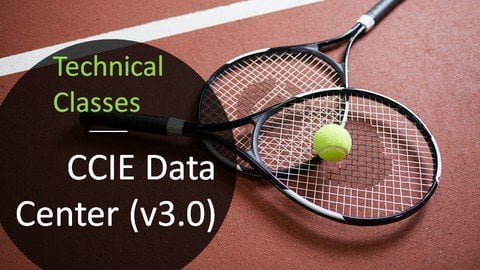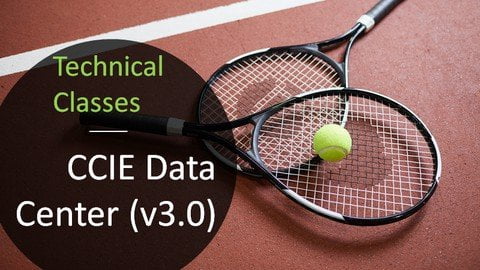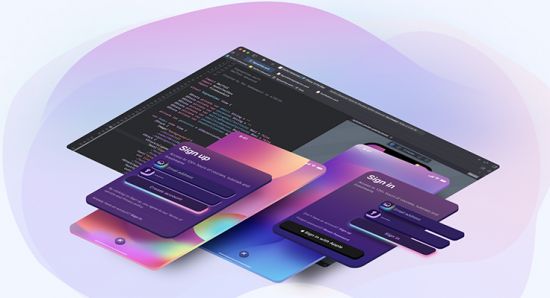
CCIE Data Center (v3.0) – Technical Classes
Genre: eLearning | MP4 | Video: h264, 1280×720 | Audio: AAC, 44.1 KHz
Language: English | Size: 11.1 GB | Duration: 23h 55m
With Ratnesh K 2xCCIE #61380 (Data Center | Security )
What you’ll learn
Implement routing and switching protocols in Data Center environment
Implement overlay networks in data center
Introduce high-level Cisco Application Centric Infrastructure (Cisco ACI™) concepts and Cisco Virtual Machine manager (VMM) domain integration
Describe Cisco Cloud Service and deployment models
Implement Fibre Channel fabric
Implement Fibre Channel over Ethernet (FCoE) unified fabric
Implement software management and infrastructure monitoring
Implement Cisco UCS Fabric Interconnect and Server abstraction
Implement SAN connectivity for Cisco Unified Computing System™ (Cisco UCS®)
Describe Cisco HyperFlex™ infrastDescribe Cisco HyperFlex™ infrastructure concepts and benefitsructure concepts and benefits
Describe Cisco HyperFlex™ infrastructure concepts and benefits
Implement Cisco automation and scripting tools in data center
Description
Exam Description: The Cisco CCIE Data Center (v3.0) Practical
Exam is an eight-hour, hands-on exam that requires a candidate
to plan, design, deploy, operate, and optimize complex Data
Center networks.
Candidates are expected to program and automate the network
within their exam, as per exam topics below.
The following topics are general guidelines for the content likely
to be included on the exam. Your knowledge, skills and abilities on
these topics will be tested throughout the entire network lifecycle,
unless explicitly specified otherwise within this document.
The exam is closed book and no outside reference materials are allowed.
1. Data Center L2/L3 Connectivity (20%)
1.1 Layer 2 technologies
1.1.a Link Aggregation
1.1.a i vPC
1.1.a ii PortChannel
1.1.b Tagging/Trunking
1.1.c Static Path binding
1.1.d Spanning Tree Protocol
1.1.d i PVST
1.1.d ii MST
1.2 Routing Protocols and features
1.2.a OSPF (v2 and v3)
1.2.a i Authentication
1.2.a ii Adjacencies
1.2.a iii Network types and Area Types
1.2.a iv LSA Types
1.2.a v Route Aggregation/Summarization
1.2.a vi Route Redistribution
1.2.b ISIS
1.2.b i Adjacencies
1.2.b.i.1. Single area, single topology
1.2.b ii Network types, Levels and Router types
1.2.b.ii.1. NSAP addressing
1.2.b.ii.2. Point-to-point, broadcast
1.2.c BGP
1.2.c i Path Selection
1.2.c ii External and Internal Peering
1.2.c iii Route reflectors and Route Server
1.2.c iv Peer Templates
1.2.c v Multi-Hop EBGP
1.2.c vi Route Aggregation/Summarization
1.2.c vii Route Redistribution
1.2.d BFD
1.2.e FHRP
1.3 Multicast protocols
1.3.a PIM
1.3.a i Sparse Mode
1.3.a ii BiDir
1.3.a iii Static RP, BSR, AutoRP, PhantomRP
1.3.a iv IPv4 PIM Anycast
1.3.a v IPv4 Anycast RP using MSDP
1.3.b IGMP
1.3.b i IGMPv2, IGMPv3
1.3.b ii IGMP Snooping
1.3.b iii IGMP Querier
2. Data Center Fabric Infrastructure (15%)
2.1 Physical fabric components
2.1.a Fabric Discovery
2.1.b Controllers/Network Managers
2.1.c Switches
2.2 Fabric policies
2.2.a Access Policies
2.2.b Multi Tenancy
2.2.c Monitoring Policies
2.3 Tenant Policies
2.3.a Application profiles and EPGs
2.3.b Networking
2.3.c Security
2.4 Fabric Monitoring
2.4.a Faults
2.4.b Events
2.4.c Health indicators
2.4.d Audit Logs
2.5 Virtual Networking
2.5.a vSphere VDS
3. Data Center Fabric Connectivity (15%)
3.1 VRF lite
3.2 L3Out
3.2.a OSPF
3.2.a i Authentication
3.2.a ii Adjacencies
3.2.a iii Network types and Area Types
3.2.a iv Route Redistribution
3.2.b BGP
3.2.b i AS manipulation
3.2.b ii External and Internal Peering
3.2.b iii Route reflectors
3.2.b iv Route Redistribution
3.2.c Transit Routing
3.3 Inter Fabric connectivity
3.3.a Multi-Pod
3.3.b Multi-Site
3.3.c Virtual POD
3.3.d remote Leaf
3.4 Overlays
3.4.a VXLAN EVPN
4. Data Center Compute (15%)
4.1 Compute Resources
4.1.a UCSM Policies, Profiles and Templates
4.1.b Hyperflex
4.2 Compute Connectivity
4.2.a SAN/LAN uplinks
4.2.b Rack server integration
4.2.c Port Modes
5. Data Center Storage Protocols and Features (10%)
5.1 FC and FCoE
5.1.a Zoning
5.1.b NPV/NPIV
5.1.c Trunking
5.1.d Portchannel
5.1.e Load Balancing
5.2 iSCSI
5.2.a Authentication
5.2.b Multipathing
5.3 RoCE v2 over IP Networks
6. Data Center Security and Network Services (10%)
6.1 Security features
6.1.a ACL’s
6.1.b First Hop Security
6.1.c Port security
6.1.d Private VLANs
6.1.e Contracts
6.2 RBAC
6.2.a Radius
6.2.b TACACS+
6.2.c LDAP
6.2.d AAA
6.3 Network Services Insertion and Redirection
6.3.a Policy Based Routing
6.3.b Policy Based Redirection
6.3.c Inter VRF communication
6.3.d Route Targets
6.3.e Prefix Lists
6.4 Services
6.4.a Flow/Telemetry Export
6.4.b SPAN
6.4.c SNMP
6.4.d Syslog
6.4.e DHCP
6.4.f NTP/PTP
6.5 Traffic management
6.5.a Queueing
6.5.b Policing
6.5.c Classification/Marking
6.5.d Scheduling
6.5.e CoPP
7. Data Center Automation and Orchestration (15%)
7.1 Data center tasks using scripts (Python and Ansible)
7.1.a Create, Read, Update, Delete using RESTful APIs
7.1.b Deploy and modify configurations
7.1.c Statistics, Data Collection
7.2 Data Center Automation and Orchestration using tools
7.2.a DCNM
7.2.b UCSD
7.2.b i Tasks
Who this course is for:
Network designers
Network administrators
Network engineers
Systems engineers
Data center engineers
Consulting systems engineers
Technical solutions architects
Field engineers
Cisco integrators and partners
Server administrator
Network manager





